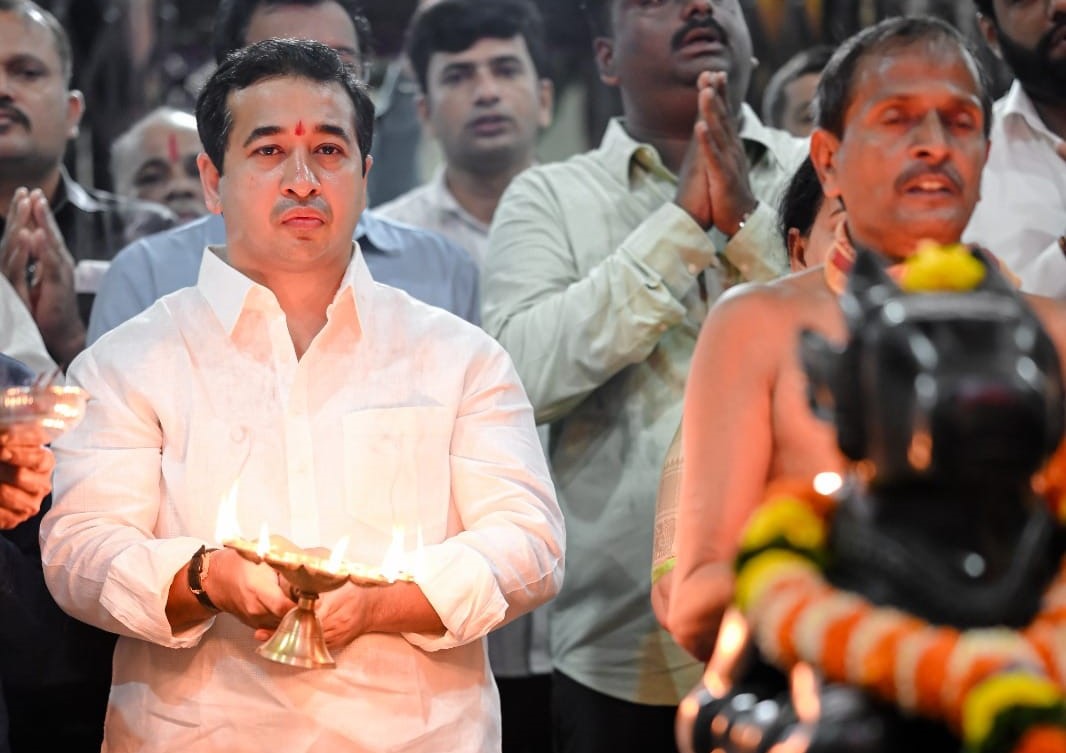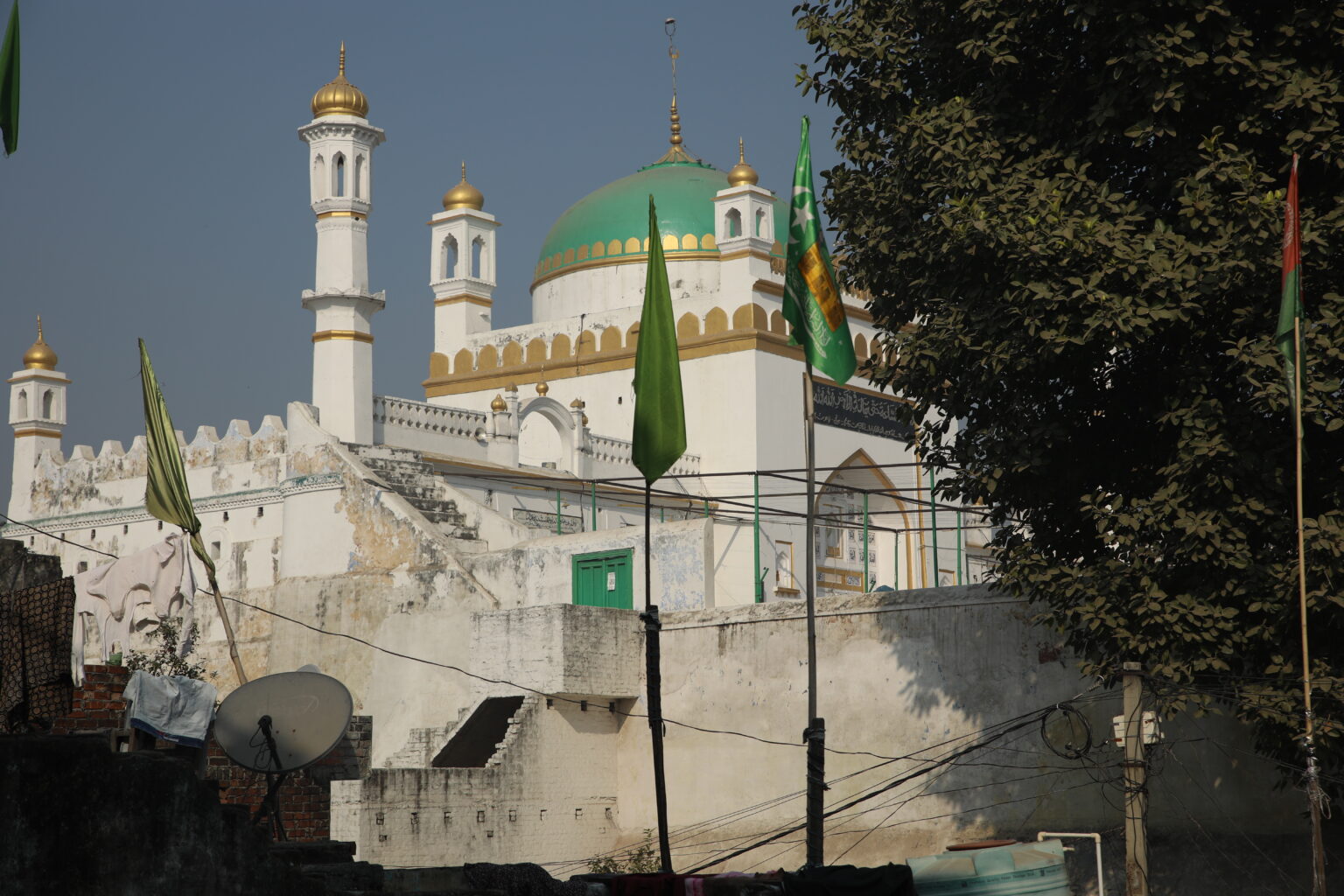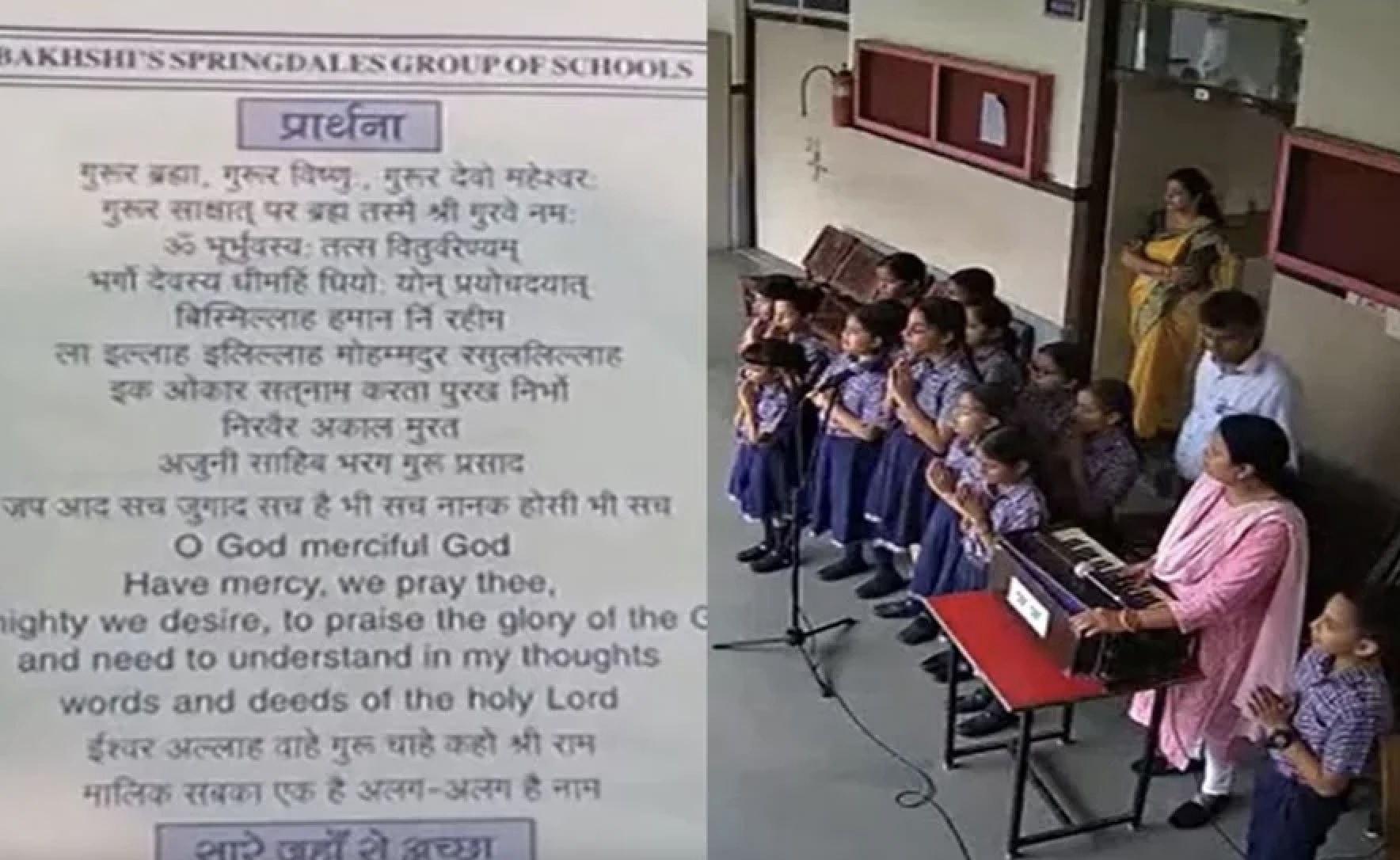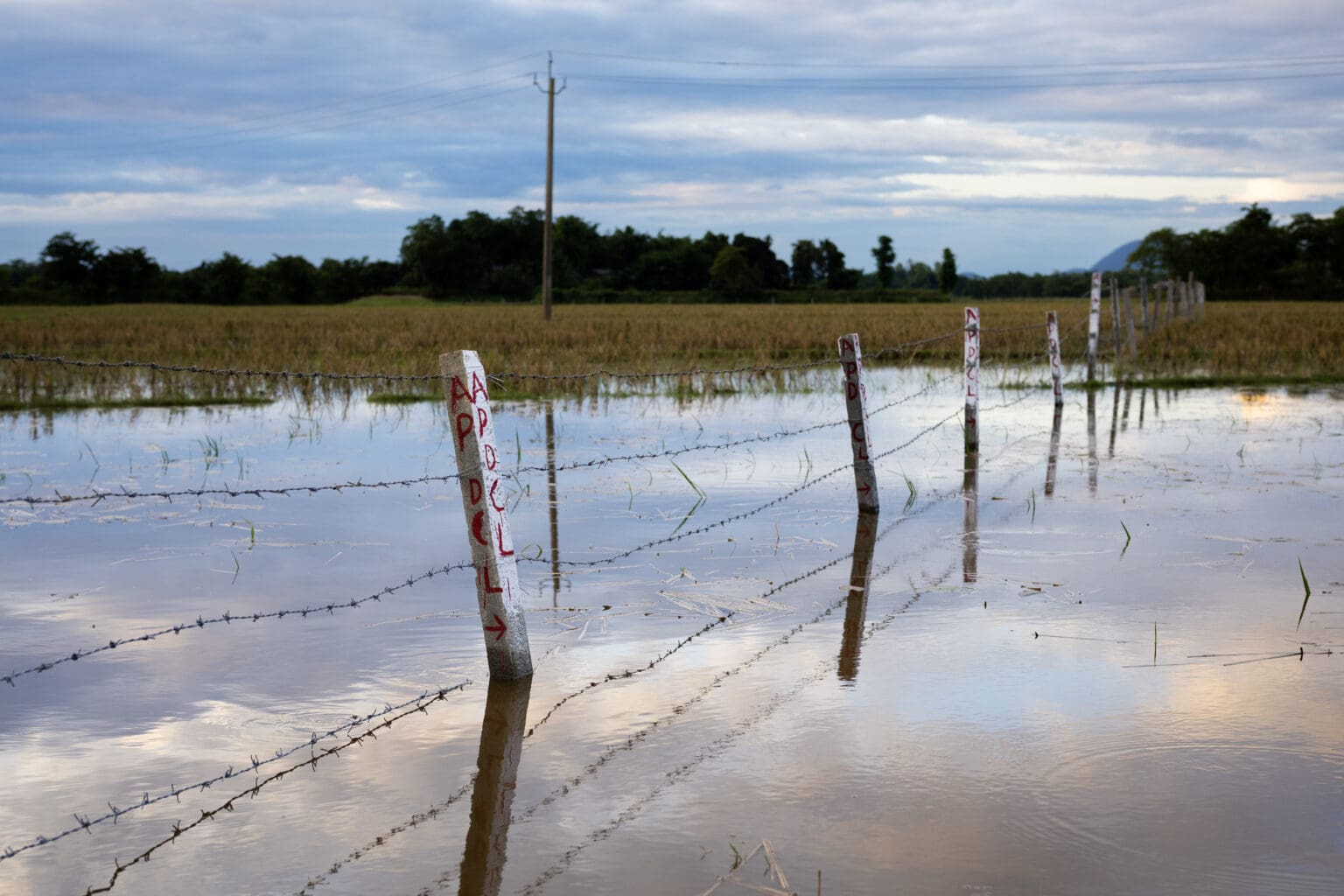
An inquiry into the communal riots that took place in Muzaffarnagar in September 2013 was conducted by a team of independent academics and a journalist from Delhi. The inquiry is based on the findings that were made by the team during its visit to Muzaffarnagar district on the 9th and the 10th of November and again on the 27th November, 2013.
The team also drew upon the assistance of Dr. Subhash Tyagi, Professor of Geography, Machra College, Meerut and Praveen Raj Tyagi, Principal Greenland Public School, Duhai, Ghaziabad.
OBJECTIVES OF OUR ENQUIRY:
1. To investigate the role of state agencies in either preventing or containing violence, in taking appropriate punitive actions against the guilty and also to investigate some incidents of communal violence.
2. To investigate the role of the government in providing relief and rehabilitating the displaced and the progress made in displaced people going back to their villages and homes.
3. To understand economic, social and political reasons that led to the recent spate of communal violence in this area of Western Uttar Pradesh.
SALIENT FINDINGS:
Role of the agencies of the State
Indian State is a Constitutionally mandated ‘Secular’ State and the Indian ruling classes as represented through its different political parties claim to adhere to the principles of ‘Secularism’ in State policy. This makes it incumbent upon the agencies of the State to be the foremost custodians of secular values in our society. However, the events related to the communal incidents in Muzaffarnagar, its aftermath and the continuing tragedy of the riot affected families / persons prove to be the undoing of the Indian State in this regard. This undoing is not the result of the proverbial ‘inadvertent administrative lapses’ but an outcome of deliberate and calculated decisions at different levels as is evident from the following:
The affidavits riots victims were made to sign for availing monetary compensation.
Even before it had first appeared in the press, our team had found that the riot-affected Muslim families in the different relief camps were being made to sign an affidavit (copy attached as annexure) that enforced following conditions on the signatories:
* That myself and members of my family have come leaving our village and home being terrorized due to violent incidents in…….. village and we will not now return to our original village and home under any circumstances.
* That the lumpsum financial help being given for my family by the government will only be used by me to rehabilitate my family. By this money I will live with my family voluntarily arranging for residence at appropriate place elsewhere.
* That in the condition of receiving lumpsum financial help amount, myself or members of my family will not demand compensation relating to any damage to any immovable property in my village or elsewhere.
The State thus sought to impose a demographic change in the riot-affected villages by trying to permanently cleanse them of the Muslim population. The monetary relief being disbursed was not to rebuild the damaged property or means of livelihood, but served as a tool to enforce this demographic change. This move has served to reinforce the terror following the communal violence in the minds of affected families / persons besides inflicting a lasting damage upon the composite culture of the people of the area and possibilities of a gradual healing. The displaced families are now being ghettoized in the Muslim dominated towns and localities and shall continue to serve as permanent markers of the communal divide opened by these riots. The benefit of this divide for the powers that be notwithstanding, the divide itself has been consciously deepened by the state.
It is noteworthy that when these aspects were pointed out by the team members to the district administration, its officials denied that the government was preventing people from going back to the villages and that the government had issued an order stating that those who wanted to return to their villages were free to do so. But on demanding that a copy of the order be provided, none could be found.
Nepotism, complicity and inaction of the police in incidents of violence
The crisis of credibility of the law and order machinery in Muzaffarnagar is best reflected in the statement of senior police officials of the district that – “both the Jats and the Muslims are complaining against us, so we must have done something good.” What is that ‘something good’ they themselves are unable to say. Police itself is at pain to readily enumerate pro-active and positive actions taken by it against the wrong doers to reclaim its credibility, especially in the eyes of the affected families of the minority community who continue to live in fear. Establishing this credibility becomes all the more difficult when in a region where Muslim population is around 27 percent, as per senior police official of the district the representation of Muslims in police force is less than 3 percent. The officer however maintained that “this did not matter for a policeman is a policeman and religion was not a factor in discharge of his duties.”
The residents at the camps were categorical in saying that they did not want to go back to their villages as their tormentors were still roaming free and that the government had done little that would have them repose their faith in the law and order machinery. The frequent transfers of the senior police officials in the district have not helped the matters either. Mr. Hari Narain Singh whom we talked to is the 5th SSP to have been posted in the district in this year.
In Qutba village where from single largest number of Muslim killings has been reported in the district (a total of 8 Muslim deaths) there was actually a picket of PAC (provincial armed police) posted in the village at the time when riots broke out. These policemen were having tea in the Pradhan’s house when mobs started rampaging Muslim households. The two Muslim men who rushed to them to seek their help were told to have been locked up by these policemen in the Pradhan’s house.
The second incident of killings that took place while the police were in the vicinity was at the Mohammepur Raisingh village on October 30 where three Muslim youth from the neighbouring Hussainpur village were killed by the Jats even as there was a picket of the state police posted in the village. The Hussainpur villagers on learning of the abduction of youth from their village persistently tried to contact the SHO of Bhaura Kalan police station to seek his immediate intervention, but their repeated calls went unanswered.
Upon conversation with the Pradhan of Hussainpur village it is learnt that despite the best efforts of the villagers many of those accused by name in the killings have still not been arrested and are roaming free in Mohammedpur Raisingh. He further alleged that the police have informally declared rates (for bribe) to weaken the cases against those accused of murders or even to let them go scot free.
Without prejudice to the larger communal design behind the Muzaffarnagar riots, the team is of considered opinion that the sequence and the circumstances of the incidents of communal violence in Muzaffarnagar show that had the police and the district administration acted with alacrity and a fair sense of judgment towards the sentiments of the people of the area in the immediate aftermath of the claimed incidence of eve teasing and related murders in Kawal village, the subsequent turn of events could have been entirely avoided.
Outsourcing of relief to the Muslim communal organizations by the State
Nothing could have been better for the cause of secularism in India than that the State was seen upon by the riot-affected Muslim families / persons as a dependable, sincere and caring source of succour in their hour of grief and a guarantor of the safety of their lives and property. The post rioting management of relief has been a concerted undoing of this ideal.
On being quizzed as to why no state agency has a visible presence at the relief camps and why all relief is being disbursed by the Jamaat-e-Islami and the Madarsa intezamia committees, the district administration told that this was in accordance with the policy of the state government. The Shiv Pal Yadav committee set up by the state government in the immediate aftermath of the riots had recommended that all relief be provided to the riot-affected families through community organizations; ostensibly because ‘they are closer to the people.’ It need be mentioned here that Jamaat was the ‘community organization’ with the most dominant and visible presence all over the relief camps.
Whatever be the wisdom of such a judgment of the state government, communal community organizations, by their very nature, cannot be expected to be credible foot soldiers for Secularism ideals. The impact of this was evident in the relief camps. Apart from the fact that they anticipated little security of their lives upon their return to their villages, the people also said that they would prefer to live “amidst the security of their own people.”
Credit need be given to the different reports before which have graphically highlighted the pitiable conditions at the camps. We would only reiterate here that the state government has failed to bestow even the least courtesies like arranging essential medical or civil amenities such as safe drinking water or functioning toilets for the people in the camps. Even though the relief camps for displaced Muslims have attracted among the highest and the mightiest VIPs of the country, this has done little to improve their living conditions.
Good or bad, whatever little help is available to the people is being arranged by the local intezamia committees under the guidance of the Jamaat functionaries. These committees also seem to be tightly controlling what the people at the camps said of the arrangements at the camps. At the Bassi Kalan camp when the residents tried to complain of their neglect by the government, certain members of the managing committee tried to stop them from saying so. Likewise at camp no 1 at Shahpur a local Maulvi expressed his displeasure when the residents complained of the conditions at the camp.
A close confidant of ours asked the leaders of the Jamaat as to why they were not opposing the affidavits that displaced Muslim families were being made to sign. To this the reply was that there was nothing to worry about this and that all of them will finally be allowed to return to their villages. The Jamaat further claimed credit for getting the displaced families a handsome relief package from the government. The silence of the Jamaat over the recent claims of the Samajwadi Party leadership regarding the camps and the Muslim refugees being branded as agents of the Congress and the BJP is equally deafening.
Meanwhile, the Jamaat seems to have had two ways of inflow of funds – by way of relief funds from the government routed through it as also from the families living in the camps who received the Rs 5 lakh government compensation. We were told by families in the relief camps that up to Rs 20,000 had been taken from them by members of the intezamia committees for constructing alternative accommodation.
It cannot be lost upon any astute observer that the Samajwadi Party government of the State will now bank on the certifications of the mullahs of the Jamaat to clean up its abominable record of a number of communal riots / disturbances in the state in a little over a year of its rule.
As of date the official stand of the local administration is that there are no refugees in any relief camp and no government aid is being disbursed in any camp. The shameless politicking that is taking place over this is very much in the public eye.
We may however emphasize that it is not an inadvertent lapse that a few months back home secretary of UP issued a letter calling for a meeting to discuss the construction of Ram temple at Ayodhya and once again another home secretary of the state under the same government has dismissed the plight of the riot affected people by saying that ‘people do not die of cold.’ Such acts are a comment on the secular credentials of the state machinery.
The communal campaign and the Muzaffarnagar violence
The communal violence in Muzaffarnagar cannot but be seen in the context of the series of incidents of communal violence in different parts of the country beginning from Kishthwar (J & K), Masoori and Meerut in UP, Indore and Harda in MP, Bettiah and Nawada in Bihar and Rangpur in Cachar district of Assam. In UP there seemed to have been a sustained campaign at communalization ever since Amit Shah took over the reins of BJP in the state. Besides campaigns like ‘chaurasi kos parikrama’ in Ayodhya, there was a mix of new innovations like the ‘love jihad’ clearly directed against the minorities. The events are pathognomonic of the tactics of the recognized Hindu communal forces represented by the Sangh Parivar. It would be evident even to a common man on the street that the approaching Lok Sabha elections of 2014 provide are the leitmotif of this campaign.
However, equally abominable is the complicity of the forces that are eulogized as ‘secular’ in facilitating the progress of this communal campaign. The track record of the Akhilesh Yadav led Samajwadi Party in dealing with communal forces in the state, its own attitude towards the common Muslims and history of hob-knobbing with Muslim communal forces is a case in the point.
The overwhelming weight of evidence points towards the fact that Muslims have been the worst sufferers of the communal orgy that swept Muzaffarnagar during the months of September and October 2013 in terms of loss to life and property and displacement of people from their homes and villages. As per the information available from the SSP (Senior Superintendent Police’s) office a total of 52 people died in the communal disturbances of which 37 were Muslims and 15 were Hindus (though we could not get the formal break-up of the Hindu deaths, but there are strong reasons to believe that these were almost exclusively of the Jats). As per unofficial sources as many as 100,000 Muslims had been displaced from their homes while by the time of our visit the government acknowledged that 50,955 persons had been displaced who were accommodated in 11 relief camps. A total of 540 FIRs have been registered in riot-related incidents, in which around 6000 people have been named.
There is a very important distinction in the manner in which deaths occurred among the Muslims and the Jats. Almost all the Jats who were killed were those who had participated in the Mahapanchayat that took place at Nangla Mandaur village on September 7. The team found ample accounts of the Jats, in tractor trollies from different villages that went to take part in the Mahapanchayat, raising provocative slogans as they passed by Muslim villages, localities and madrasas. Insinuations like dogs being dressed in burqa and being beaten with slippers were amply on display. Slogans like – “Musalmano ke do sthan – Pakistan ya kabristan’ were also raised. This was not only narrated by the Muslims we talked to but even some of the belligerent Jats we talked to admitted that “these youth have been taken in by the charisma of Modi and they raised slogans in his support” while going for the Mahapanchayat.
The Jats who died were killed in reaction to this deliberate provocation. Most of these deaths took place on the evening of September 7 in attacks on Jat trollies as they returned from the Mahapanchayat or were of those Jats who got injured in these attacks and died later in the hospitals. The only incident of a seemingly planned attack on Jats took place in Pur Baliyan village on September 7 in which some Mulle Jats wanted to attack the trolley of Jats from Sohram village as it returned from the Mahapanchayat. However, in the melee of the violence Jats from Kakda village also got killed. It is noteworthy that none of the Jat families from Pur Baliyan village itself were attacked by Muslims.
In comparison to this the attacks and deaths of Muslims have taken place as part of a sustained campaign in different villages and those who got killed were innocent Muslim women, children and youth of the lower classes who had no role in attacks on Jats. The deaths of Muslims and their forced displacement from the villages appear to have been the handiwork of organized mobs. The handwork of the larger communal design and organization in this was evident in the well-rehearsed and exactly similar arguments which the Jats from different villages forwarded to rationalize the killings and the displacement of the Muslims. As indeed one Jat teacher in Kakda village, who was not in the least sympathetic to Muslims, described the communal violence in the region as – “Yeh hai Amit Shah ka jadoo.” The Qutba village which witnessed the largest number of Muslim deaths had been witness to a panchayat that was attended by the BJP president Mr Rajnath Singh about a year ago. This is a pointer to the forces that have been at work in the area.
The Jats in villages like Kakda and Mohammedpur Raisingh put forth ludicrous arguments such as – “the Muslims were willing to come back to their villages, but have deliberately stuck to the relief camps ever since the government announced the 5 lakh relief package” and that they “themselves destroyed their property to claim inflated relief.” The well recognized communal arguments propagated by the Hindu communal forces against Muslims – “they have large families and do not believe in family planning”; “they are anti-national” and that “they will create a Kashmir like situation here as well” – were amply heard in the villages from the Jats.
Is it Jat versus Muslims or Hindus versus Muslims?
It has been reported that lower caste Hindus also participated in attacks on Muslims along with the Jats in different villages. However, the Muslims whom we interviewed in the relief camps felt that wherever the lower caste Hindus acted against them it was under the pressure of the Jats as the Jats were the dominant Hindu caste in the area and the lower caste Hindus had little option but to follow the diktat of the Jats. This is also a pointer in the direction that the communalization process in the area is linked to the larger power dynamics of the area. We did not have the time during our visit to sufficiently study this aspect of the communal phenomenon in the region.
On visiting the villages, the distinct caste hierarchies were observed in the structure of the villages, and also in terms of the involvement of different castes in the decision making processes. For example in the 35 biradari panchayat that was convened in Mohammadpur Raisingh on November 10, representatives of all the upper castes were invited but none from the lower castes.
It is however noteworthy that no communal violence has been reported from any of the Muslim dominated villages in the district. Simultaneously, there were Jat dominated villages where the Jats took up the responsibility of protecting their Muslim brethren. Some of such villages were Kheda Gani, Garhi Novabad, Garhi Jaitpur and Kurawa.
The Way Forward
In our opinion the biggest finding of our investigation into the communal riots at Muzaffarnagar is that despite the constitutional and formal averments of the ‘secular’ character of the Indian state, the de facto reality remains that the state machinery has acted in a highly communal manner which undermines India’s secular credentials and drives the communal cleavages deeper. Even as the communal poison being spread by the Hindutva forces need be countered with full force by Indian people, the role played by the Samajwadi Party government in UP in connivance with the Muslim communal forces during the entire phase and its latest act of forcibly evicting the riot displaced families from relief camps instead of acknowledging and fulfilling its responsibilities towards then with humility brings into question the advisability of forming alliances with such parties to counter communalism. The stark reality is that despite the fact that Muslims constitute a much larger share of UP’s population as compared to Yadav’s, the propensity of the Yadavization of administrative structure is much stronger while the Muslims can at best expect their lives to be spared in the name of secularism. The reality of India’s secularism, it seems, sways between ‘Hindu Rule’ of the so called secular parties of the ruling classes and the ‘Hindu Rashtra’ of the saffron brigade.
To uphold secularism in India, the first thing to realize is that – ‘fighting communalism is not merely an electoral issue.’ The communal forces can be defeated only by ground struggles built by an alliance of the minorities, the working masses, the dalits, the tribals, other oppressed castes and nationalities and progressive sections of the intelligentsia. In this regard the example held out by the people of Hussainpur, Kheda Gani, Garhi Novabad, Garhi Jaitpur, Kurawa and other such villages we could not know of, howsoever under-reported, is a ray of hope.
OUR DEMANDS
The following demands acquire top-most priority in our opinion under the prevailing circumstances:
1. All the accused named in the FIRs should be arrested.
2. Decommunalize the state apparatus.
3. Restore all villagers back to their homes.
4. Scrap the affidavit which was taken against five lakh compensation amount.
This report was first published on RevolutionaryDemocracy.org here.






